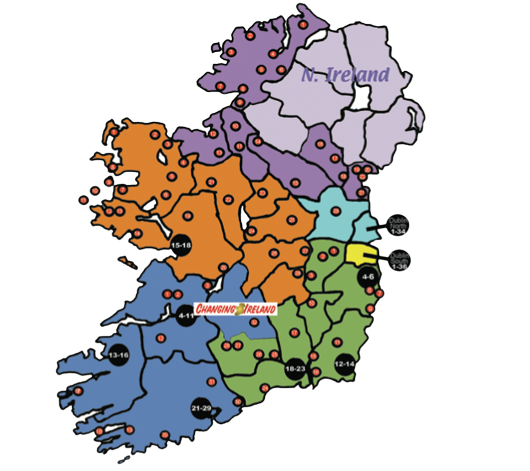The Department of Environment, Community and Local Government this afternoon released figures to ‘Changing Ireland’ that show the number of projects funded under the Local and Community Development Programme.
The Department’s statement reads:
“The latest phase of cohesion involves the integration of Community Development Projects (CDPs) with the 52 LDCs and the establishment of the approved alternative structures. At one stage there was a total of 185 CDPs/groups being funded under the [LCDP] programme, however this is now 153. The position of these is as follows:
The position of these is as follows:
13 are classified as groups of national/special innovation are not part of the integration process
49 form part of six approved alternative integration models:
- 3 Northside CDPs
- 17 Women’s CDPs
- 6 Limerick CDPs
- 14 Traveller CDPs
- 2 Bray CDPs
- 7 CDPs part of the HSE alternative model
71 have concluded with or in the final stages of the integration process with their aligned LDC.
15 remain outside the integration process for the moment but it is hoped that arrangements for these will be concluded later this year.
5 are part of an alternative model for the “Islands – non Gaeltacht” which is currently under consideration within the Department.”

– Map showing 180 CDPs in 2006. Source: Changing Ireland. Download as a high-res PDF with the full listing here: https://www.changingireland.ie/wp-content/uploads/2011/06/Iss-19-CDP-map-pages-180-projects-in-2006-high-res-NB.pdf
“The Local and Community Development Programme (LCDP), which was launched on 1st January 2010, superseded the Local Development Social Inclusion and the Community Development Programmes. The aim of the LCDP is to tackle poverty and social exclusion through partnership and constructive engagement between Government and its agencies and people in disadvantaged communities.
“The Programme is underpinned by four high level goals:
- To promote awareness, knowledge and uptake of a wide range of statutory, voluntary and community services;
- To increase access to formal and informal educational, recreational and cultural development activities and resources;
- To increase peoples’ work readiness and employment prospects; and
- To promote engagement with policy, practice and decision making processes on matters affecting local communities.
“A key difference between the LCDP and its predecessor programmes is that, when it is fully implemented, it will be delivered through an integrated delivery structure in each of the 52 Local Development Company (LDC) areas. While a national model involving full integration was set out by the Department, it was made clear that other options could be considered once they met a range of criteria including:
- · Reduced structures;
- · Better integrated delivery of services;
- · Supporting efficiencies; and
- · Reducing company law compliance requirements for projects.”




